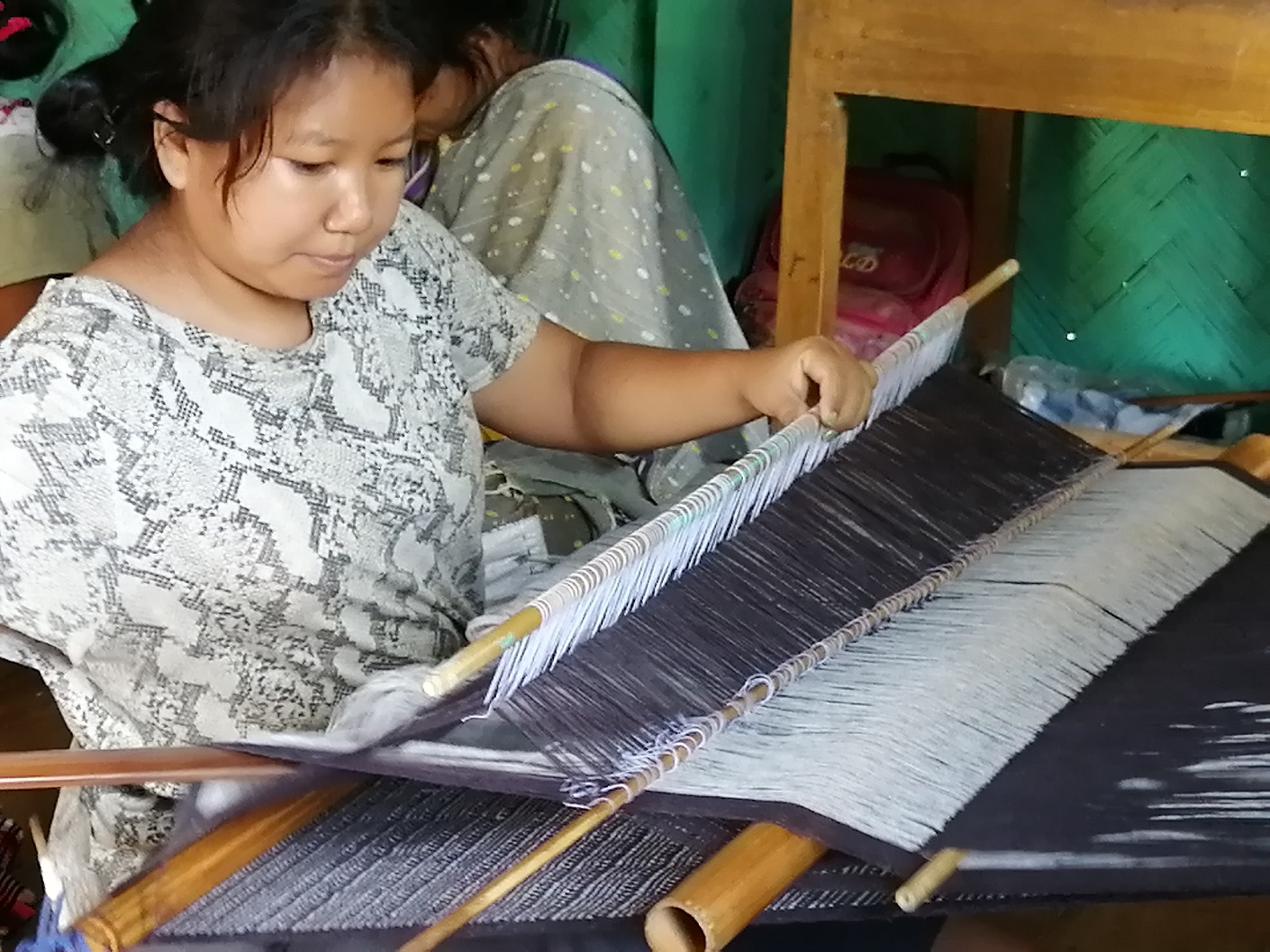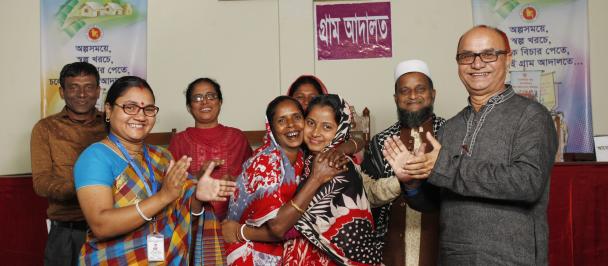Rejuvenating traditional artisanship to save the ecosystem
September 30, 2022

Olivmoy, a dreamer, has been working on women's economic empowerment since 2010 at her school and mobilized other women to form a weaver group.
While most of CHT's population is vulnerable to extreme poverty, the women living in rural and remote areas engaged in jhum cultivation suffer the most. While tasked with supporting their households despite the lack of infrastructure, economic opportunities and education, they are also limited by gender roles and patriarchy, essentially barring them from improving their living conditions.
USAID's Chittagong Hill Tracts Watershed Co-Management Activity (CHTWCA) under UNDP's SID-CHT project is working to reduce the forest dependency of rural CHT women by creating an alternative and regenerative rural livelihood centred around traditional weaving.
CHTWCA is empowering the women weavers as a collective power within the market towards creating an adequate supply of sustainable weaving products and developing and promoting an economical supply chain for the weaving practice.
"I want to share my experiences and lessons learned with the young girls," said Olivmoy Baum, one of the inspirational weavers from Soanlu para Village Common Forest weaving community under Nakhyiangchari Upazila in Bandarban.
Olivmoy, a dreamer, has been working on women's economic empowerment since 2010 at her school and mobilized other women to form a weaver group. She realized that many indigenous women lacked appreciation of CHT's culture and diversity, and weaving that used to be practised from early times was slowly being forgotten.
In CHT, more than 532 women from 43 groups were identified for their weaving skills, especially in the poorest and remotest areas with little or no alternative income opportunities. This is why the weaving culture profoundly impacts the economic situation of these rural women.
The CHTWCA project empowers economically and socially vulnerable women by providing a range of support such as market access for indigenous weaving and capacity development training to leverage themselves into financially independent women who can support their families from home.
By providing market exposure, support, and training to women who were earlier prone to exploit forests, CHTWCA has helped these women to have sustainable income within their communities.
Currently, it is working to create sustainable supply chains that minimize the negative impact on the environment and support the weavers’ communities to promote their products to improved markets.
"So I put two and two together to find a way for our women engaged in traditional shifting cultivation (Jhum) to stay at home and earn a living from indigenous weaving," said Olivmoy.
In 2021, she started to form a weaving group to stop forest dependency so they can have a choice to make money as weavers and preserve and rejuvenate the almost forgotten indigenous weaving.
"When you see a problem, do something about it, in however small ways. Don't let anybody kill your dreams, whatever your dreams are", said Olivmoy.
Upon receiving various training on handloom weaving, designing, grading, small business development, financial management, and market linkages, in collaboration with the project, Olivmoy's group has turned into a business since January 2022 by producing different weaving products.
Gradually, with support from the project towards improved market access, they now receive regular purchase orders from the country's largest ethnic products retail chain Aarong and other local buyers.
Aarong has engaged its local agent to facilitate the supply chain. Through the market linkage, Aarong offers a fair price for the weavers and provides other quality inputs for a sustainable supply chain.
In August 2022, Olivmoy herself produced 50 pieces of handloom-shawl, supplied them to Aarong, and earned BDT 20,000. Weaver women from the group are happy that they could be involved in that intervention alternative to exploitative jhum cultivation, helping them earn additional income for their family.
Access to an improved market built their confidence. She is hopeful that weaving the loom can change their future. The weavers have revived and rejuvenated the indigenous weaving culture, preventing communities from forest exploitation and earning economic stability.
Through these efforts, women increase their income and live a sustainable livelihood. The weavers can create high-quality and relevant weaves, making their fashion end-product more viable for the market.
By sharing its end-to-end supply chain, the women groups can convey stories of rural women weavers who create these, and the buyers can support these women by buying lifestyle products. Buyers know where the items they have purchased come from and who made them. By encouraging local sourcing, they are working towards creating long-term sustainable supply chains to reduce dependence on imported yarn and materials.
CHTWCA alleviates systemic poverty by creating a sustainable ecosystem for women artisans. By rejuvenating the weaving culture, the project supports the sustainable livelihood of underserved women and the rural economy to thrive.
Local tourism has provided additional income to the weavers and villagers. These have created "agency" or power, especially economic power and dignity amongst the women weavers and the extended community.
Through women's economic empowerment and improved access to the market, the community depends less on forests, contributing to ecosystem restoration.

 Locations
Locations



